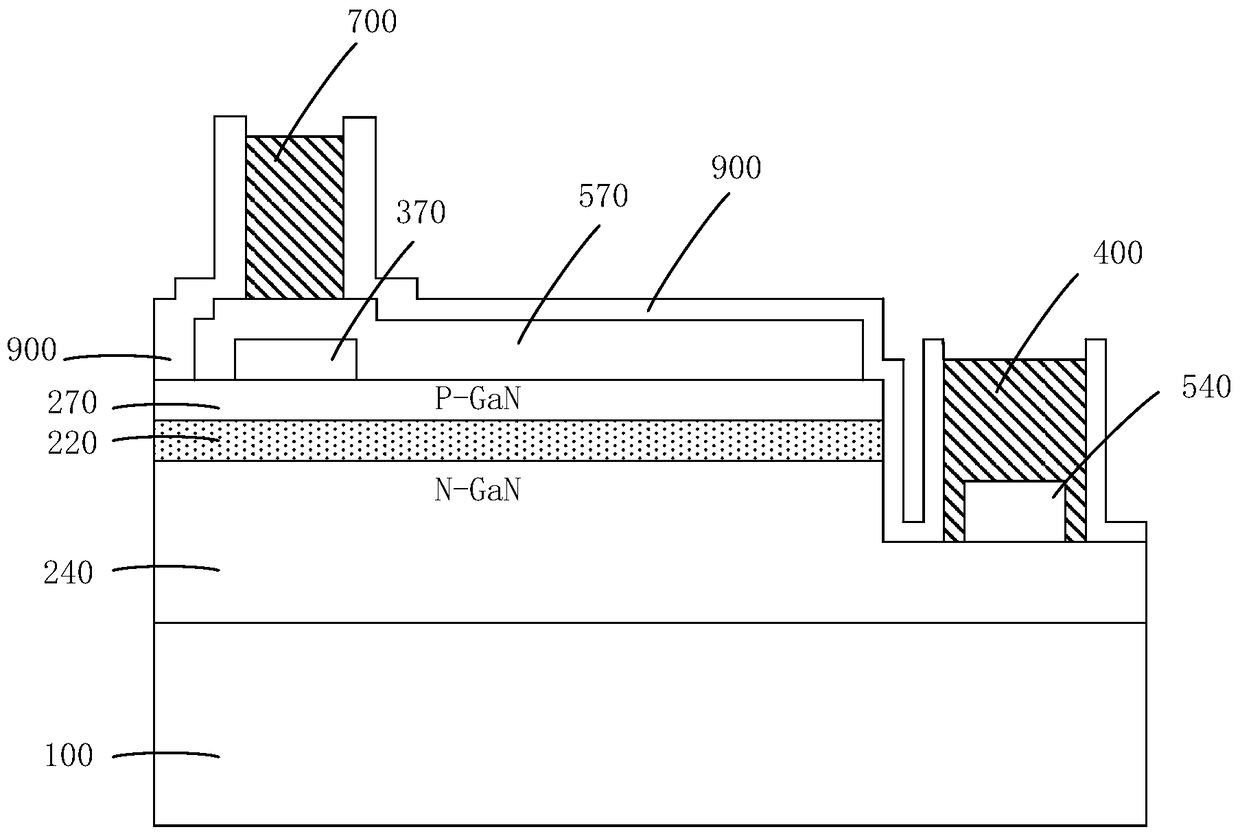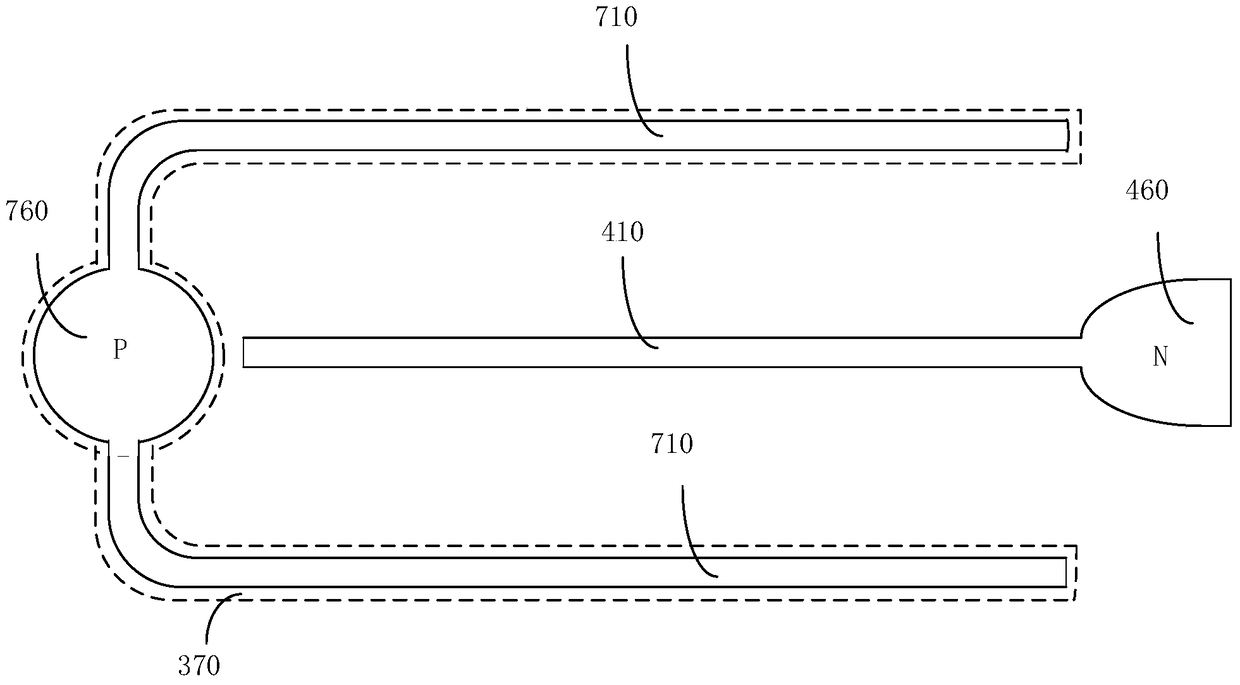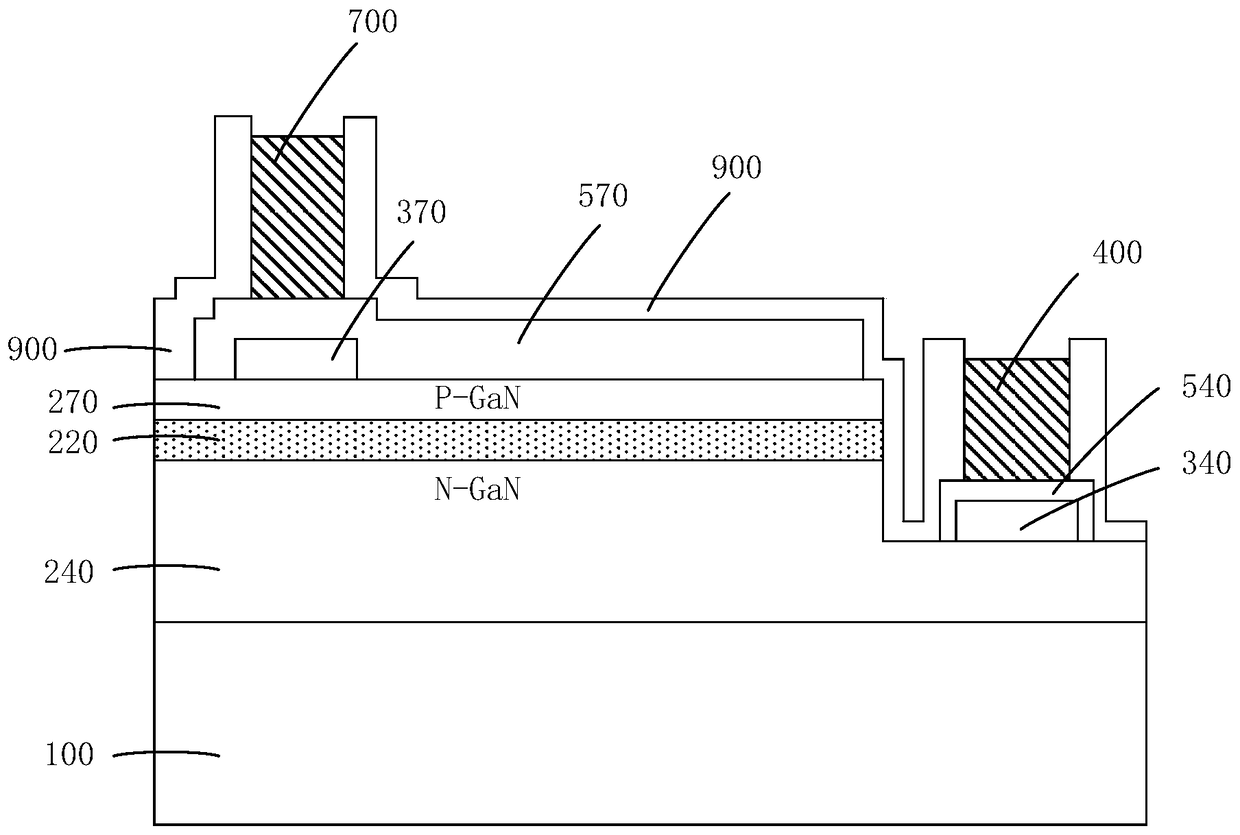led device structure
A technology for LED devices and material layers, applied in semiconductor devices, electrical components, circuits, etc., can solve the problems of occupying light-emitting area, reducing the light-emitting brightness of LED devices, and lack of N-layer GaN current expansion, etc., to increase uniformity and efficiency. Effect
- Summary
- Abstract
- Description
- Claims
- Application Information
AI Technical Summary
Problems solved by technology
Method used
Image
Examples
Embodiment Construction
[0052]In traditional technology, the LED device structure is generally based on the N-type GaN layer and the P-type GaN layer on the sapphire substrate from bottom to top, and the quantum well layer formed between the N-type GaN layer and the P-type GaN layer. . Since the P-type GaN layer is closer to the surface, and the quantum well layer is the main light-emitting surface of the LED device, generally the insulating layer under the metal layer in the electrode is mainly added on the P-type GaN layer to adjust and expand the P-type GaN layer. Current distribution in the GaN layer. However, only a part of the N-type GaN layer is exposed, and it is located under the quantum well layer. Therefore, in terms of improving the luminous brightness of LED devices, people do not pay much attention to the N-type GaN layer.
[0053] in the opposite figure 2 When a voltage is applied to the electrode structure shown in , a voltage signal is provided to the P-block metal electrode part ...
PUM
 Login to View More
Login to View More Abstract
Description
Claims
Application Information
 Login to View More
Login to View More - R&D
- Intellectual Property
- Life Sciences
- Materials
- Tech Scout
- Unparalleled Data Quality
- Higher Quality Content
- 60% Fewer Hallucinations
Browse by: Latest US Patents, China's latest patents, Technical Efficacy Thesaurus, Application Domain, Technology Topic, Popular Technical Reports.
© 2025 PatSnap. All rights reserved.Legal|Privacy policy|Modern Slavery Act Transparency Statement|Sitemap|About US| Contact US: help@patsnap.com



